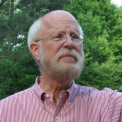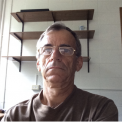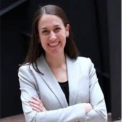Perovskite Chalcogenides are a new class of semiconductors, which have tunable band gap in the visible to infrared part of the electromagnetic spectrum. Besides this band gap tunability, they offer a unique opportunity to realize large density of states semiconductors with high carrier mobility. In this talk, I will discuss some of the advances made both in my research group and in the research community on the theory, synthesis of these materials and understanding their optoelectronic properties. First, I will discuss how structure and chemical composition in Zr-containing perovskite sulfides can tune the optical properties in the visible spectrum, with an eye towards solar energy conversion. Second, I will discuss how the band gap can be further reduced to the infrared region for Ti-containing perovskite sulfides. I will also discuss about their anisotropic optical properties and large linear optical response. Finally, I will provide a general outlook for future studies on these exciting new class of materials.
References:
Nature Photonics, 12, 392-396 (2018).
Advanced Materials 29, 1604733 (2017).
Chemistry of Materials, 30 (15), 4897-4901 (2018).
Chemistry of Materials, 30 (15), 4882-4886 (2018).



.jpg)


